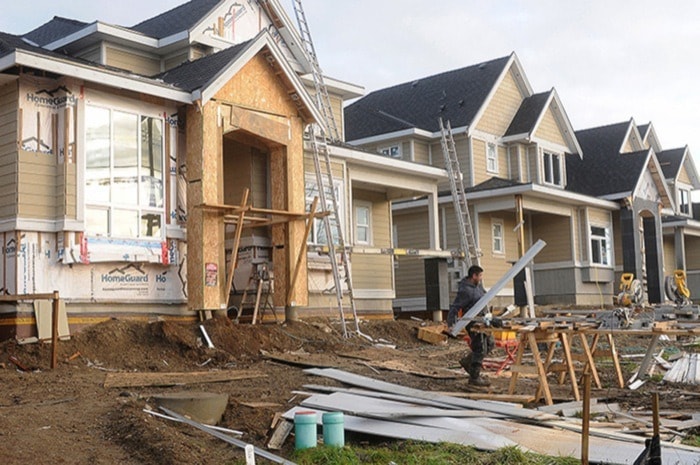Surrey has once again blown past the billion-dollar mark in construction projects in 2016, recording the second-highest value in development in the city's history.
City figures provided at the request of The Leader show Surrey saw $1.47 billion in construction last year – second only to 2007, when there was $1.49 billion in development.
The figures indicate that just over $1 billion worth of that construction came from residential building permits. They were relatively equally split between single-family dwellings, homes with secondary suites and townhomes, with the last quarter of the money spent going to condos and miscellaneous residential building permits.
That matches the year prior, which saw a nearly identical split among residential construction projects.
Much of the construction occurred in south Newton and South Surrey, according to Surrey's General Manager of Planning and Development Jean LaMontagne.
Commercial construction came in at $171 million, while industrial construction accounted for $118 million in building permit values.
Institutional projects were about double the value of the year prior, at $103 million, and other permits tallied just under $7 million.
Commercial construction figures were partly thanks to some large projects that came through in 2015 and were just undergoing tenant improvements.
Industrial development was, and continues to be, strongest in Campbell Heights in South Surrey.
While the boom in construction is great news, city officials say it's generally preferred to have a larger percentage of commercial and industrial development compared to residential than Surrey is currently getting.
The reasoning is that those two sectors bring in about three times the property taxes to the city, while drawing on far fewer associated taxpayer-funded resources, such as recreation centres, libraries and roads.
A staff report presented to council in 2001 – when housing stock represented 72 per cent of the total amount of property taxes generated – indicated Surrey was not meeting sustainable levels.
“A ratio of 60 per cent residential and 40 per cent industrial and commercial is considered to be the minimum level necessary relative to the long-term health of the city,” the staff report said.
Last year's ratio alone was 72.9 per cent residential, 19.7 per cent industrial and commercial, seven per cent institutional and 0.5 per cent other.
Another important reason for a more equitable balance is to create a city where people can work locally, LaMontagne noted.
The city is currently at about 0.7 jobs per person, which is up from where it was 10 years ago.
The residential demand in Surrey remains extremely strong due in large part to ballooning housing prices in other areas of the Lower Mainland.
Because of skyrocketing housing values, the ratio of residential to commercial/industrial is 87 per cent to 13 per cent.
Surrey's General Manager of Finance and Technology Vivienne Wilke said there's no cause for alarm.
"I don't think so," Wilke said, noting the city has a very stable tax base.
Building permit values in Surrey over the last decade:
• 2006 – $1,341,960,510
• 2007 – $1,488,819,162
• 2008 – $1,268,535,177
• 2009 – $859,232,522
• 2010 – $1,213,936,581
• 2011 – $1,216,268,920
• 2012 – $1,305,166,356
• 2013 – $1,053,316,786
• 2014 – $1,021,135,324
• 2015 – $1,459,483,003
• 2016 - $1,468,660,280
